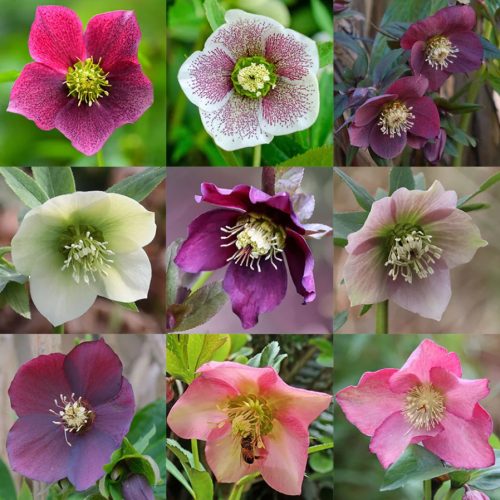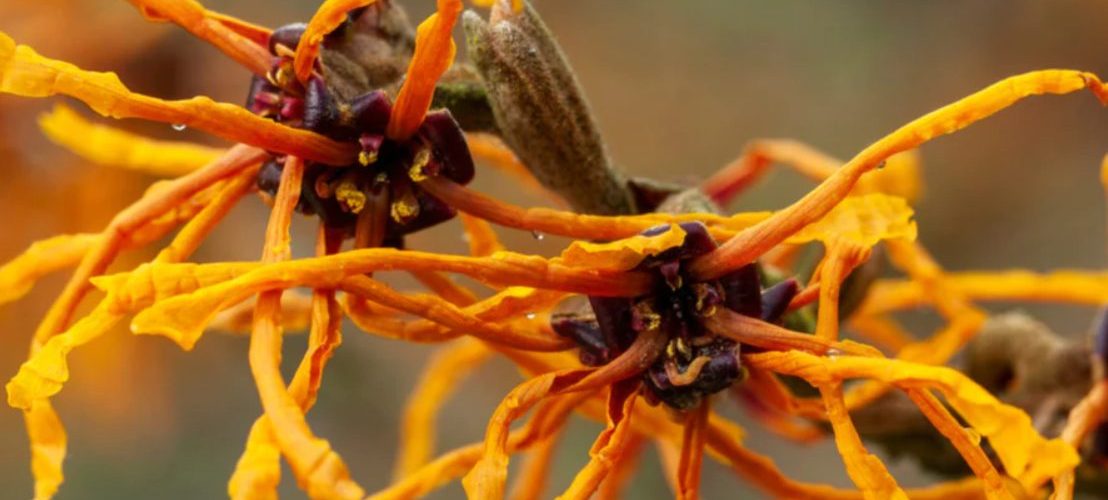
Winter joy in the garden
Written on 27th January, 2023The last of the leaves are still stubbornly clinging to the almost bare trees, and the wonderful mellow tones of autumn are long gone. It may be cold, dark and wet outside, but there is plenty of cheer to be found in the garden.
Structure
At this time of year, formal evergreen shapes really come into their own, when the garden is at its quietest, and an overnight frost can transform them into beautiful wintery sculptures.
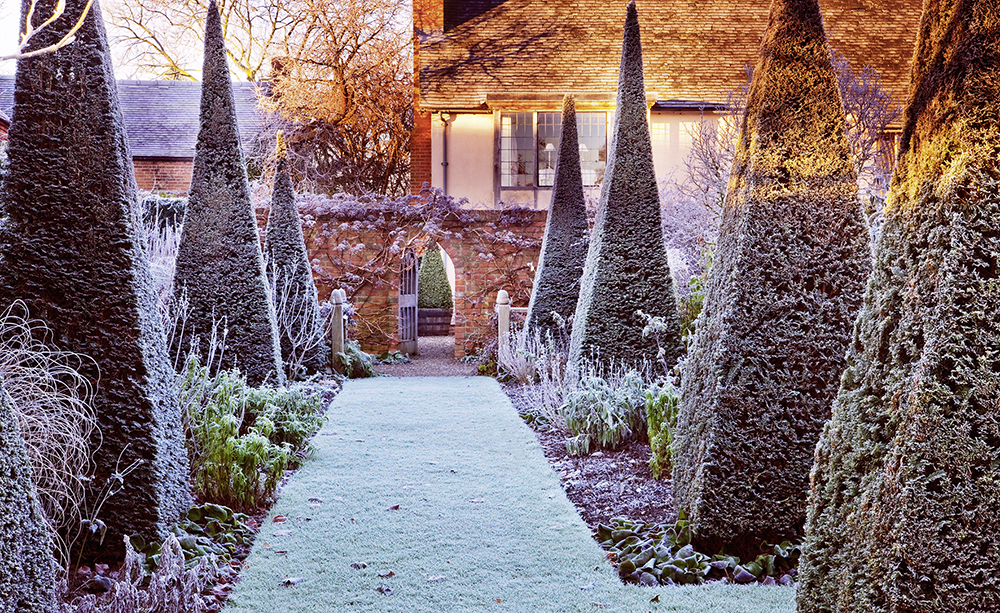
Other shrubs, perhaps not appreciated during summer months, can take centre stage in winter. Fatsia japonica has wonderfully architectural evergreen leaves, and striking round, creamy white flowers, which are a valuable food source for beneficial insects, especially as they are produced in the middle of winter when not much else is on offer.
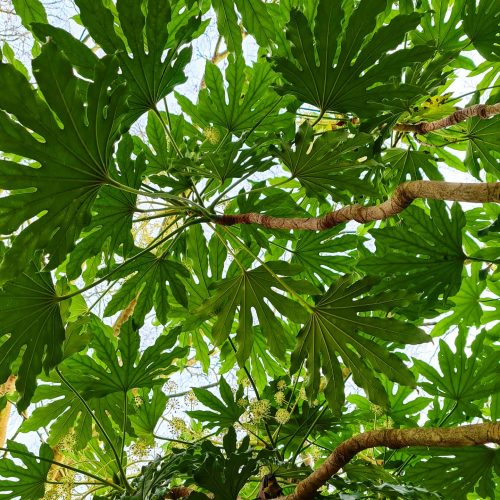
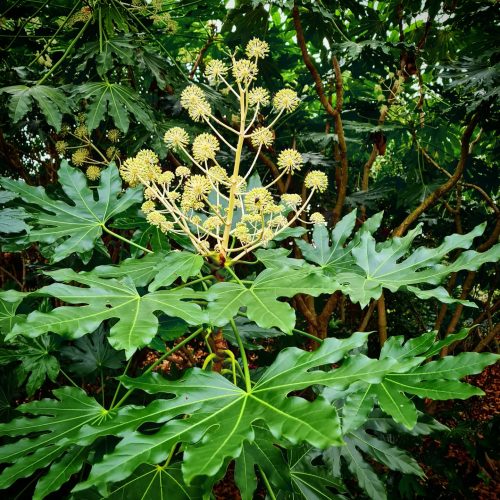
Scent
Winter scent can be very strong at this time of year. Viburnum x bodnantense ‘Dawn’ is a fantastic shrub, and clusters of pink or blush white, sweetly scented blooms on bare stems stand out in the January gloom.
Chimonanthus praecox ‘Luteus’ produces one of winter’s most intoxicating scents. Best trained against a south or west facing wall, the sweet scent of the clusters of yellow, translucent flowers wafts around the garden in late winter.
Hamamelis x intermedia ‘Aphrodite’ has slightly crimped, sweetly scented orange-red flowers which are produced in great abundance from January onwards.
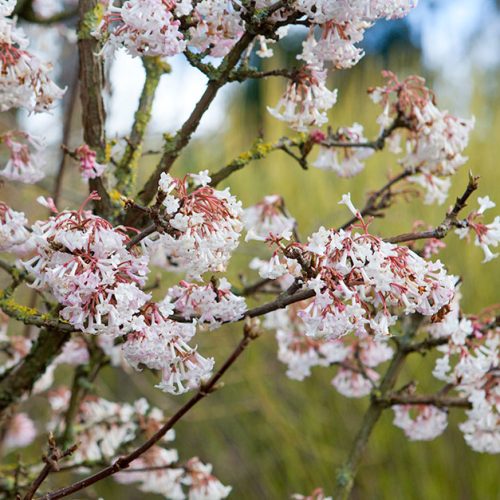
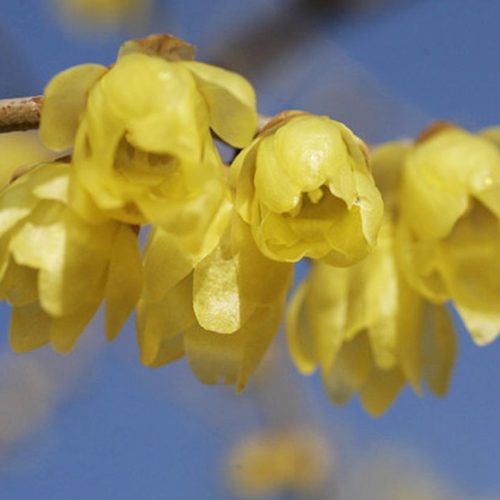
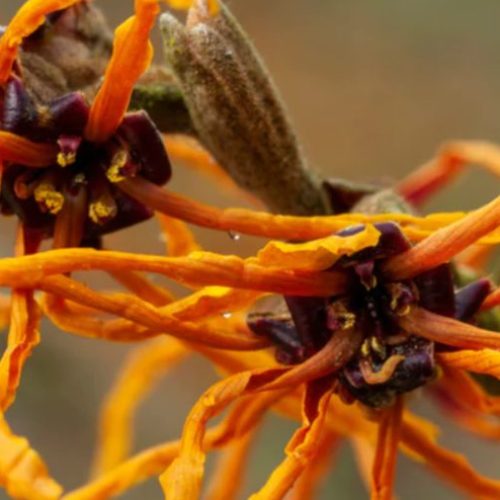
Colour
It’s grey and flat out there, but plants that flower during the winter months can really put on a show. Mahonias are, it has to be said, a fairly unimpressive plant for most of the year. I see them planted in city parks, used because they are tough and dependable. You’ll only notice them when you jump over the fence to retrieve a ball for the dog and their spiny leaves scratch as you brush past, but in winter they are transformed, with long lasting and eye catching displays of yellow flowers.
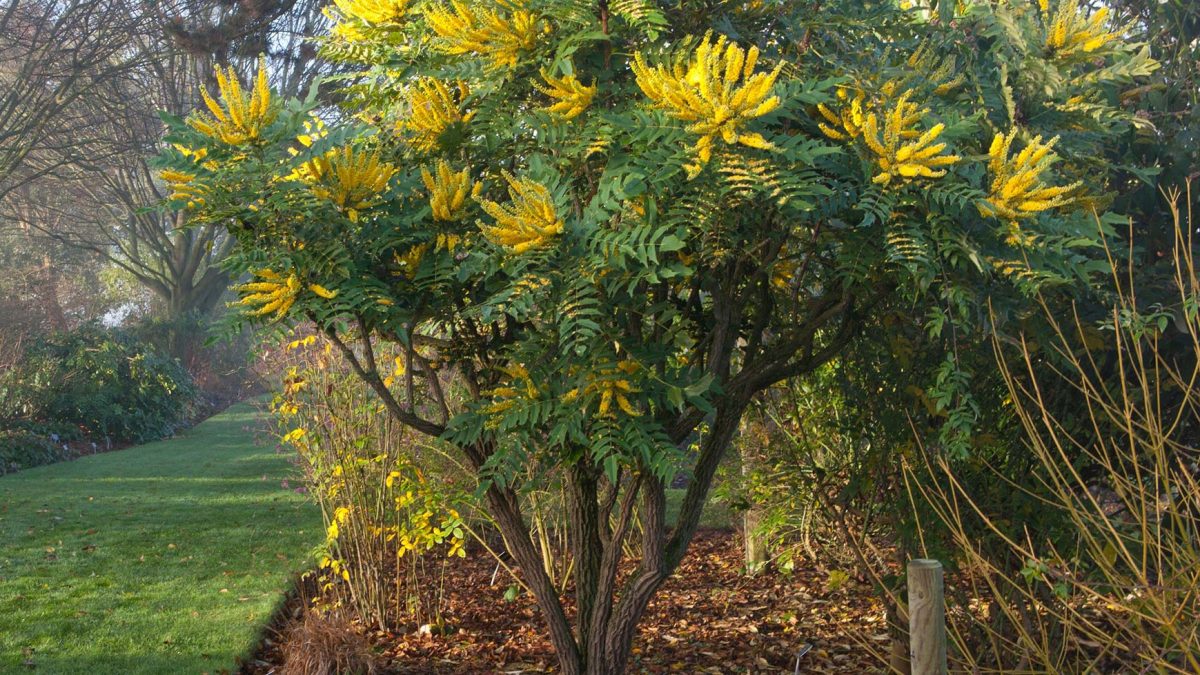
Helleborus niger, also called the Christmas rose, is a semi-evergeen perennial, which occurs naturally in mountainous areas of Switzerland and Southern Germany. Dozens of hybridised forms of H.orientalis have been bred to dazzle in the gloomiest part of the garden, flowering from December through to February.

